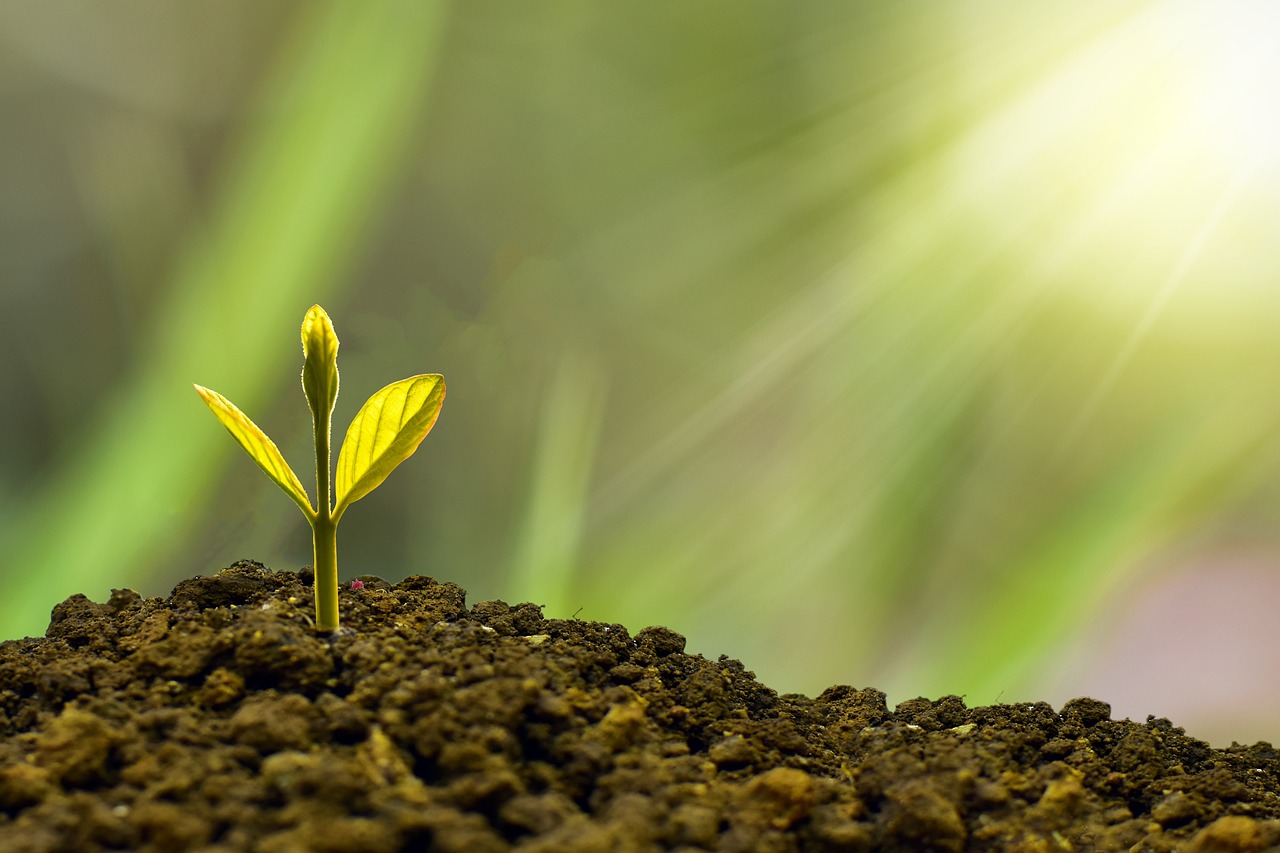Trees symbolize hope and resilience through their ability to grow in adverse conditions, provide shelter and sustenance, and regenerate after disturbances. Their life cycle, marked by growth, decay, and rebirth, mirrors the human experience of overcoming challenges.
Trees have been an integral part of human culture for centuries. They are often seen as a source of life, providing oxygen, shade, and food. Many cultures revere trees, associating them with various mythologies and spiritual beliefs. The deep roots of a tree allow it to withstand storms, exemplifying strength and perseverance. This resilience has led to their representation as symbols of hope in literature, art, and religion.

The life cycle of a tree reflects the journey of life itself. Trees grow from seeds, facing numerous challenges such as harsh weather, competition for resources, and pests. Yet, they continue to thrive and adapt. This growth process illustrates the importance of resilience in overcoming obstacles. Furthermore, when trees are damaged or cut down, they can often regenerate or sprout new growth from their stumps. This regenerative ability is a powerful metaphor for recovery and hope.
The Significance of Trees in Various Cultures
Trees hold significant meaning across different cultures around the world. Here are some notable examples:
- The Oak Tree: In many cultures, the oak represents strength and endurance. It is often associated with wisdom and longevity.
- The Banyan Tree: This tree symbolizes immortality in Hindu culture due to its ability to grow new roots and expand its canopy over time.
- The Willow Tree: Representing flexibility and resilience, willow trees are often linked to healing and adaptability.
In addition to their cultural significance, trees play a vital ecological role. They are crucial for maintaining biodiversity, improving air quality, and regulating climate. Forests serve as habitats for countless species and help prevent soil erosion. Protecting trees is essential for sustaining the environment and promoting overall well-being.

To further understand the importance of trees, consider the following table that highlights key environmental benefits provided by trees:
| Benefit | Description |
|---|---|
| Oxygen Production | Trees absorb carbon dioxide and release oxygen through photosynthesis, making them essential for life on Earth. |
| Climate Regulation | By providing shade and releasing moisture into the air, trees help moderate temperatures in urban areas. |
| Habitat Creation | Trees provide shelter and food for numerous animal species, contributing to biodiversity. |
| Soil Erosion Prevention | Tree roots anchor soil in place, reducing erosion and promoting healthy landscapes. |
In literature and art, trees often serve as symbols of hope. Many authors use trees to illustrate themes of growth, renewal, and connection to nature. For example, in many fairy tales, a tree may represent a turning point or a safe haven for characters seeking refuge or guidance.
The imagery of trees can evoke a sense of peace and tranquility. As people wander through forests or sit beneath a tree’s canopy, they often feel a deep connection to nature. This connection can foster a sense of hope and resilience in times of personal or collective hardship. The simple act of being near trees can uplift spirits and inspire individuals to overcome their challenges.

Furthermore, community efforts to plant trees can serve as powerful symbols of collective hope. Reforestation projects and urban greening initiatives bring people together to improve their environments while promoting sustainability. Such initiatives not only enhance local landscapes but also create a sense of shared purpose among community members.
The Role of Trees in Environmental Restoration
Trees play a vital role in environmental restoration efforts. Their ability to absorb carbon dioxide and release oxygen makes them essential in combating climate change. As urban areas expand, the importance of trees increases. They not only enhance the aesthetic value of cities but also improve air quality and promote biodiversity.
In recent years, many communities have initiated tree planting campaigns. These campaigns focus on restoring deforested areas and enhancing urban landscapes. By doing so, they contribute to both environmental health and community well-being. Here are some key benefits of tree planting initiatives:
- Climate Mitigation: Trees help reduce greenhouse gas emissions by sequestering carbon.
- Enhanced Biodiversity: Planting a variety of tree species can create habitats for numerous wildlife species.
- Soil Improvement: Tree roots improve soil structure, prevent erosion, and promote nutrient cycling.
- Water Conservation: Trees assist in maintaining the water cycle by facilitating groundwater recharge.
Community Engagement Through Tree Planting
Tree planting activities often bring communities together. They provide an opportunity for individuals to connect with one another while working towards a common goal. Engaging in such initiatives fosters a sense of ownership and responsibility toward the environment. Here are several ways communities can participate in tree planting efforts:

- Organizing Local Events: Communities can host tree planting days, inviting residents to volunteer.
- Partnering with Organizations: Collaborating with environmental organizations can provide resources and expertise.
- Educating Residents: Workshops can be held to teach community members about the benefits of trees and proper planting techniques.
- Creating Tree Nurseries: Establishing local nurseries can ensure a steady supply of native trees for planting efforts.
These initiatives not only benefit the environment but also strengthen community bonds. Participants often develop a deeper connection to their local landscape, fostering a sense of pride and responsibility for their natural surroundings.
The Symbolism of Trees in Literature and Art
Trees are prevalent symbols in literature and art, often representing deeper meanings such as growth, survival, and hope. Many authors and artists have drawn inspiration from the resilience of trees, using them to convey complex emotions and themes. Here are a few notable examples:
- The Giving Tree by Shel Silverstein: This beloved children’s book illustrates the selflessness of a tree that gives everything to a boy, symbolizing unconditional love and generosity.
- “The Tree” by John Fowles: In this novel, the tree serves as a metaphor for human existence, representing the interconnectedness of life.
- Vincent van Gogh’s “The Olive Trees”: This famous painting captures the strength and beauty of trees, reflecting nature’s resilience in the face of adversity.
The portrayal of trees in various forms of art often evokes feelings of nostalgia and longing. They remind viewers of the cycles of life and the passage of time, reinforcing the idea that even in difficult circumstances, there is potential for renewal and hope.
Influence on Mental Health and Well-Being
Spending time around trees and green spaces has been shown to have numerous mental health benefits. Research indicates that nature exposure can reduce stress, increase feelings of happiness, and improve overall well-being. Here are some key points regarding the influence of trees on mental health:
- Stress Reduction: Being in nature helps lower cortisol levels, leading to reduced stress.
- Enhanced Mood: Interaction with nature can boost serotonin levels, promoting feelings of happiness.
- Cognitive Benefits: Nature exposure has been linked to improved concentration and creativity.
- Physical Activity: Parks and green spaces encourage outdoor activities, which further enhance mental health.
Trees serve as powerful reminders of stability and continuity. Their steadfast presence offers comfort during uncertain times. The act of spending time among trees can help individuals regain perspective and find solace amidst life’s challenges.
The Future of Trees: Challenges and Opportunities
As urbanization and climate change continue to pose challenges, the future of trees remains uncertain. However, proactive measures can help ensure their survival and continued symbolism of hope. Addressing issues such as deforestation, pollution, and habitat destruction is crucial. Here are some strategies that can promote the preservation and health of trees:
- Implementing Sustainable Practices: Encouraging sustainable forestry practices can help maintain healthy forests.
- Legislation: Supporting laws that protect existing forests and promote reforestation is essential.
- Public Awareness Campaigns: Educating communities about the importance of trees can foster greater appreciation and care for natural resources.
By taking action now, society can ensure that trees will continue to thrive as symbols of hope and resilience for generations to come.
Tree Conservation Efforts Worldwide
Across the globe, various organizations and communities are actively engaged in tree conservation efforts. These initiatives aim to protect existing trees, restore degraded areas, and promote awareness about the importance of trees for both ecological and human well-being. Some notable examples include:
- The Arbor Day Foundation: This nonprofit organization focuses on planting trees, educating communities, and promoting tree care.
- TreePeople: Based in Los Angeles, TreePeople mobilizes volunteers to plant trees and advocate for sustainable urban forestry.
- One Tree Planted: This global reforestation nonprofit plants a tree for every dollar donated, working with local partners to restore forests.
Such organizations not only contribute to environmental restoration but also engage communities in meaningful ways, fostering a sense of collective responsibility towards nature. By participating in these initiatives, individuals can actively contribute to the health of their local ecosystems.
Impact of Deforestation on Local Communities
Deforestation poses significant threats not only to the environment but also to local communities. When forests are removed, the consequences can be devastating. Here are some key impacts of deforestation:
- Losing Resources: Communities that depend on forests for food, shelter, and medicine face severe resource shortages.
- Disruption of Ecosystems: The removal of trees leads to habitat destruction, affecting biodiversity and wildlife populations.
- Climate Change Acceleration: Deforestation contributes to increased greenhouse gas emissions, exacerbating climate change.
- Soil Erosion: Without tree roots to anchor the soil, erosion increases, leading to loss of arable land and increased flooding risks.
These effects highlight the importance of sustainable practices and conservation efforts. Protecting forests is essential for the well-being of both people and the planet.
Urban Trees: Enhancing City Life
Urban trees play a crucial role in enhancing the quality of life in cities. As populations grow and urban areas expand, integrating trees into city planning becomes increasingly important. Here are some key benefits of urban trees:
- Improved Air Quality: Trees filter pollutants from the air, providing cleaner air for city residents.
- Temperature Regulation: Urban trees help lower temperatures through shade and evapotranspiration, mitigating the urban heat island effect.
- Noise Reduction: Trees can act as sound barriers, reducing noise pollution in densely populated areas.
- Aesthetic Value: Green spaces enhance the beauty of urban environments, making them more inviting and pleasant.
Incorporating trees into urban design not only improves environmental conditions but also encourages community interaction and recreation. Parks and green corridors provide spaces for social engagement, physical activity, and relaxation.
Strategies for Increasing Urban Tree Canopy
To maximize the benefits of urban trees, cities can adopt several strategies aimed at increasing tree canopy cover. Here are some effective approaches:
- Tree Planting Programs: Implementing city-wide tree planting campaigns can significantly expand urban forests.
- Green Roof Initiatives: Encouraging green roofs on buildings can create additional green space in dense urban settings.
- Community Involvement: Engaging local residents in tree care and planting fosters a sense of ownership and responsibility toward urban greenery.
- Sustainable Land Use Planning: Integrating green spaces into urban development plans ensures that trees are preserved and valued in growing cities.
By prioritizing tree canopy expansion, cities can enhance livability and promote environmental sustainability while fostering community resilience.
The Role of Technology in Tree Conservation
The advancement of technology has opened up new avenues for tree conservation efforts. From monitoring forest health to engaging communities through digital platforms, technology plays a vital role. Here are several ways technology is being utilized in this field:
- Drones: Drones are used for aerial surveys to monitor forest health, assess damage from natural disasters, and track deforestation rates.
- Mobile Apps: Applications that allow users to identify tree species or report tree health contribute to citizen science initiatives.
- Remote Sensing: Satellite imagery helps researchers analyze changes in forest cover over time, aiding conservation planning.
- GIS Technology: Geographic Information Systems (GIS) are employed to map tree populations and plan urban forestry initiatives effectively.
This integration of technology enhances the ability to protect trees and monitor their health more efficiently. As conservation efforts evolve, technology will continue to play a pivotal role in ensuring that trees remain vital symbols of hope and resilience for future generations.
The Connection Between Trees and Mental Health
The mental health benefits provided by trees and green spaces are increasingly recognized in today’s society. Studies show that spending time in nature can lead to significant improvements in mental well-being. Here are some of the key psychological benefits associated with trees:
- Stress Relief: Exposure to natural environments can lower stress levels and promote relaxation.
- Improved Mood: Interacting with trees and nature can enhance mood and decrease feelings of anxiety and depression.
- Enhanced Focus: Nature exposure has been linked to better attention and cognitive function, making it easier to concentrate.
- Increased Physical Activity: Green spaces encourage outdoor activities, contributing to both physical and mental health.
These benefits highlight the importance of incorporating trees into urban planning and community design. Accessible parks and green areas allow individuals to connect with nature, fostering a sense of peace and promoting overall mental health.
The Role of Trees in Climate Change Mitigation
Trees are not only symbols of hope but also powerful allies in the fight against climate change. Their ability to sequester carbon dioxide plays a crucial role in reducing greenhouse gases in the atmosphere. Here are some significant ways trees contribute to climate change mitigation:
- Carbon Sequestration: Trees absorb CO2 during photosynthesis, storing carbon in their biomass and soil.
- Cooling Urban Areas: By providing shade, trees can help lower energy consumption for cooling buildings, thus reducing fossil fuel usage.
- Flood Mitigation: Trees improve soil absorption, reducing runoff and minimizing the risk of floods.
- Biodiversity Support: Healthy forests support diverse ecosystems, which are essential for resilience against climate impacts.
As climate change continues to accelerate, the role of trees becomes even more critical. Sustainable forestry practices and reforestation efforts are essential for maximizing their benefits in combating climate change.
Final Thoughts
Trees represent much more than just flora; they embody hope, resilience, and the interconnectedness of life. Their ability to thrive under adverse conditions serves as a powerful metaphor for human strength and perseverance. Throughout history, trees have been revered across cultures as symbols of life, growth, and renewal.
The various benefits that trees provide—ranging from environmental restoration to mental health improvements—highlight their importance in our lives. As urbanization increases and climate challenges intensify, the need for sustainable practices and tree conservation becomes paramount. Communities that engage in tree planting initiatives not only enhance their local landscapes but also foster a sense of unity and shared purpose.
Furthermore, the integration of technology into conservation efforts offers exciting opportunities to monitor and protect tree populations effectively. By utilizing drones, mobile apps, remote sensing, and GIS technology, we can enhance our understanding of tree health and ensure their preservation for future generations.
Ultimately, as we face the challenges of a changing world, trees will continue to stand as enduring symbols of hope and resilience. By prioritizing the health of our forests and urban trees, we are investing in a sustainable future that benefits both our environment and our communities. Let us cherish and protect these vital resources, ensuring that they remain a source of inspiration and strength for years to come.
